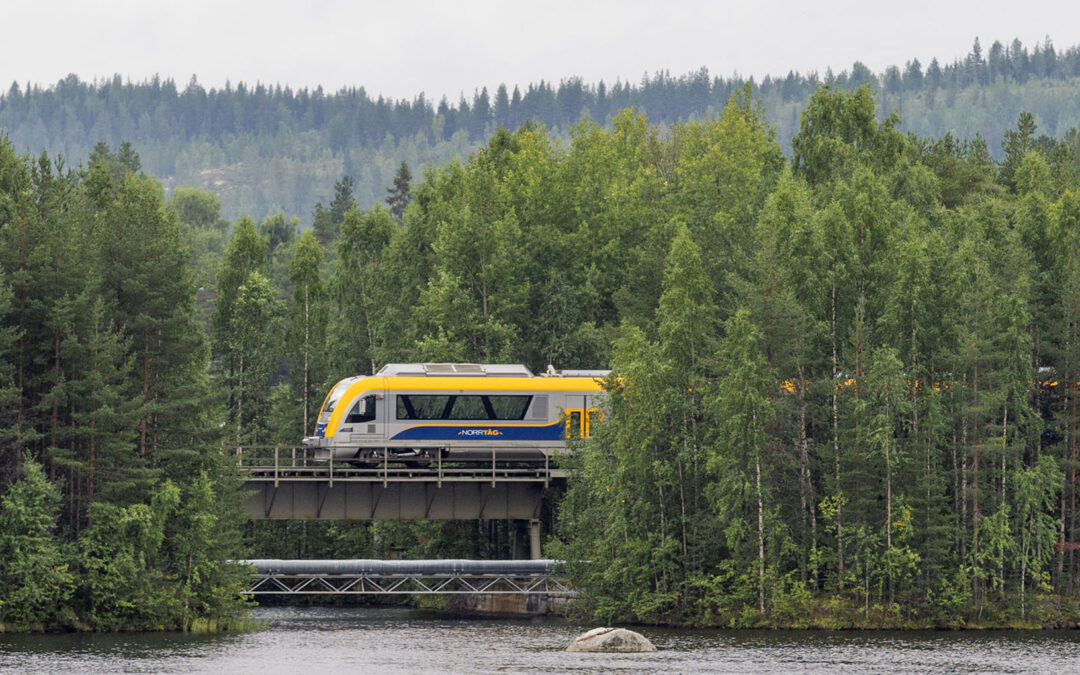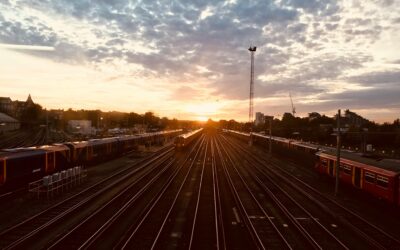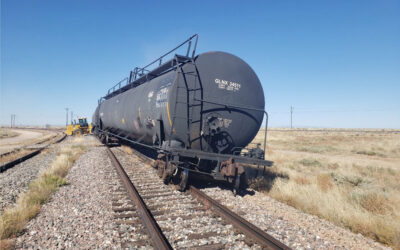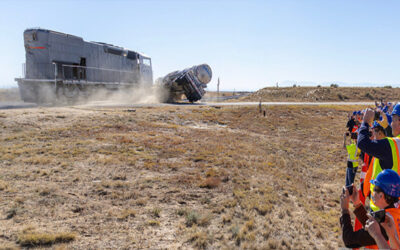Railway Metrics and Dynamics’ PMU sensor used in new research study at KTH
Sensor monitoring of railway bridges can save society a lot of money. Researchers at KTH, Royal Institute of Technology in Stockholm, are now investigating whether sensors from Railway Metrics and Dynamics can provide the same results as permanently mounted sensors – at a fraction of the cost.
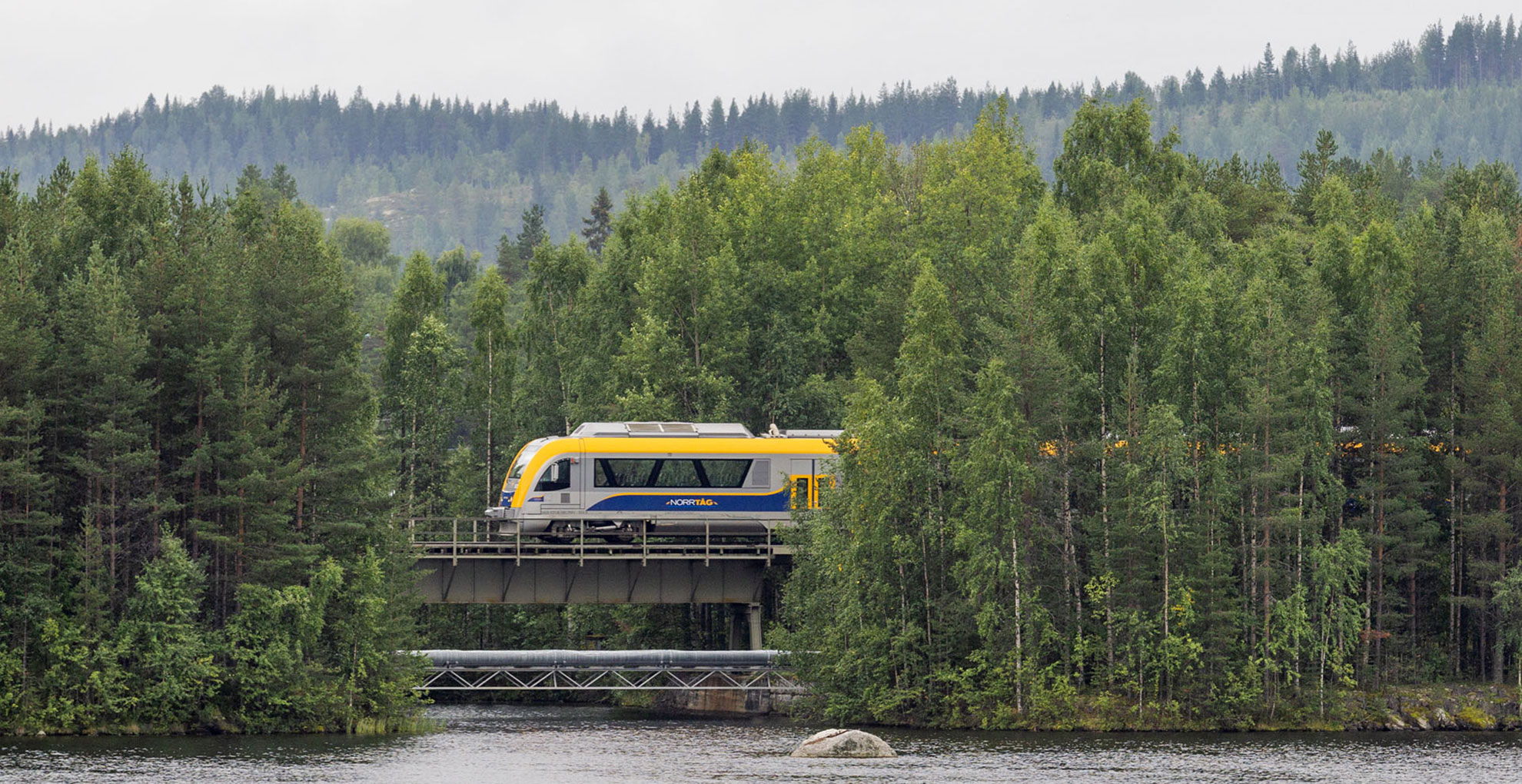
“In terms of research, bridge monitoring is a very hot area. There are research groups at Massachusetts Institute of Technology (MIT) and University College Dublin, for example, that are also actively working on on-board systems to detect changes in bridges,” says Professor Raid Karoumi, who told us more about this in an article in Ny Teknik in November 2022. PHOTO: KASPER DUDZIK
Sensor monitoring of railway bridges allows real-time monitoring of the condition of bridges, enabling timely maintenance to maximise their lifespan. The problem is that a complete fixed sensor system costs between SEK 100 000 and 200 000 per bridge.
On the Botnia line between Uusimaa and Umeå, to give an example, there are 147 railway bridges. Monitoring all bridges would be very costly.
Collaboration with IoT Bridge and KTH
Instead, fitting sensors on a train, which passes over all the bridges on the Botnia Line, would be much more cost-effective. This is precisely what researchers at the Royal Institute of Technology (KTH) are investigating in a new research study. The study is being carried out in collaboration with the bridge monitoring company IoT Bridge and Railway Metrics and Dynamics (RMD), which has a proprietary battery-powered sensor unit for trains, the Performance Monitoring Unit (PMU).
“If the PMU sensors can replace permanent sensors on bridges, it means that continuous real-time monitoring of bridges can be achieved, instead of sending an inspector out once a year. Bridges can then be kept in better condition and have a longer lifespan at a lower cost. A big saving for society,” says Raid Karoumi, Professor of Bridge Engineering at KTH.
Infrastructure new business area
The PMU sensors were originally developed with the aim of monitoring the condition of locomotives and railway wagons. But over time, the technology has evolved.
“Our patented technology has many different applications, in many different industries. The fact that we are now testing our sensor technology for monitoring bridges opens an additional business area,” says Jan Lindqvist, CEO of Railway Metrics and Dynamics.
In parallel with the study, RMD has won a contract for the Swedish Transport Administration for automated measurement of the railway facility where the company will also use its sensors to monitor fixed infrastructure.
The research study is part of the EU project In2Track.3 This project has for some years included measurements on the Botniabanan, more specifically on a railway bridge that runs over the Bryngeån river a short distance southwest of Örnsköldsvik. It is investigating how the vibration pattern of the bridge changes with train speed and temperature, and how the passage of the train affects the fatigue life of the bridge. Since they have data from this bridge before, the researchers at KTH have chosen to use it as a guinea pig for the PMU sensors, which will be placed on a Norrt train.
“The big challenge is to filter out the effect of the vibrations that happen in the track of the bridge, so that we only see the effects of the accelerations in the bridge itself. We will be able to detect changes, the question is how small the changes will be,” says Raid Karoumi.
PMUs also on the bridge
In addition to placing PMUs on trains, the KTH researchers have also mounted two PMUs directly on the railway bridge.
“Some shorter bridges may not be possible to monitor with on-board sensors on trains. That’s why we also want to investigate whether sensors mounted directly on the bridge deliver as good data as expensive systems costing hundreds of thousands of euros,” says Raid Karoumi.
The first results of the Botnia Line survey are expected in February, with more detailed results later in spring 2023.
“In terms of research, bridge monitoring is a very hot area. There are research groups at Massachusetts Institute of Technology (MIT) and University College Dublin, for example, that are also actively working on on-board systems to detect changes in bridges,” says Professor Raid Karoumi, who told us more about this in an article in New Technology in November 2022.
More news
Railway Metrics and Dynamics Wins Procurement for Precision Positioning Service for the Swedish Transport Administration
Railway Metrics and Dynamics has won the Swedish Transport Administration’s (Trafikverket’s) procurement for a precision positioning service for railway vehicles.
Success for RMD in the U.S.
After months of preparation and an intensive week in the United States, the much-anticipated derailment test was finally carried out during the TTC Conference and Tour in Pueblo, Colorado. The demonstration of RMD’s PMU sensors went exactly as planned – and drew considerable attention from both organizers and participants.
RMD Arrives in the U.S. for the TTC Conference
On October 7–8, the TTC Conference & Tour will take place at the Transportation Technology Center (TTC) in Pueblo, Colorado.. Railway Metrics and Dynamics (RMD) has been specially invited by TTC to demonstrate its technology and to give a presentation on sensor technology, AI, and digitalization.
